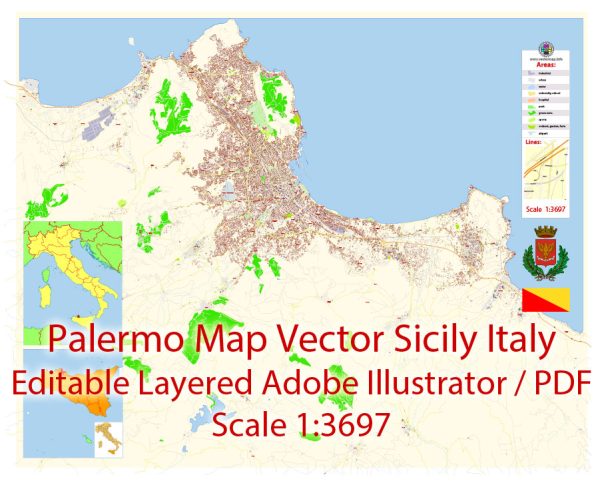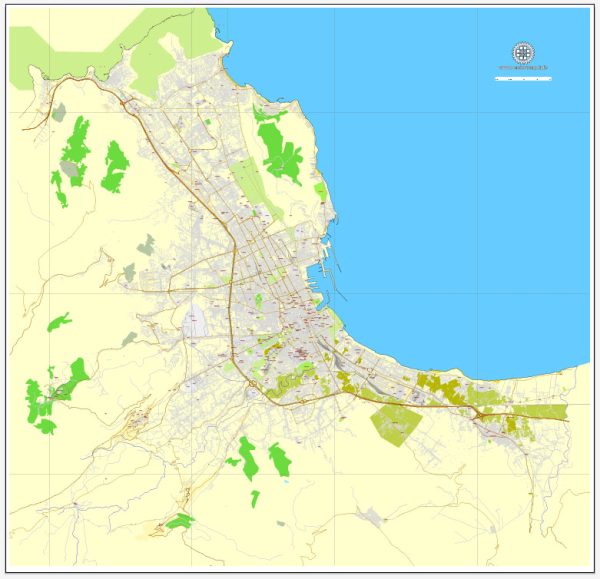Palermo, the capital city of the autonomous region of Sicily in Italy, has a rich history of urban development that spans over 2,700 years. The city’s strategic location in the Mediterranean has made it a melting pot of various cultures and civilizations, influencing its architecture, culture, and overall urban fabric.
- Phoenician and Carthaginian Period (8th–3rd centuries BCE): Palermo was originally founded by the Phoenicians in the 8th century BCE. It served as a vital port and trading center. The Carthaginians later took control of the city, leaving their mark on its early urban development.
- Roman Period (3rd century BCE–5th century CE): Palermo became part of the Roman Republic after the Punic Wars. During this period, the Romans expanded the city and established infrastructure such as roads and aqueducts. The remains of Roman structures can still be seen in some parts of the city.
- Byzantine Period (5th–9th centuries): With the fall of the Western Roman Empire, Palermo came under Byzantine rule. The Byzantines reinforced the city’s fortifications and left behind influences in art and architecture.
- Arab-Islamic Period (9th–11th centuries): One of the most significant periods in Palermo’s history was the Arab rule, which began in the 9th century. During this time, Palermo thrived as a center of learning and culture. The Arabs introduced advanced irrigation systems, gardens, and architectural elements such as domes and arches. The famous Norman-Arab-Byzantine architectural style, known as Arab-Norman, emerged during the later Norman rule.
- Norman Period (11th–12th centuries): The Normans conquered Palermo in 1072, bringing a blend of Norman, Arab, and Byzantine influences to the city’s architecture and urban layout. Notable examples of this fusion include the Palermo Cathedral and the Palatine Chapel.
- Swabian and Angevin Period (13th–15th centuries): Palermo continued to evolve under Swabian and Angevin rule, with the construction of palaces and churches. The city also became a prominent cultural and economic hub during this time.
- Spanish Period (16th–18th centuries): The Spanish Habsburgs left their mark on Palermo with the construction of baroque-style buildings and the enlargement of the city. The Quattro Canti, a baroque square at the intersection of two main streets, is a notable example of this period.
- Bourbon Period (18th–19th centuries): During the Bourbon rule, Palermo underwent further expansion and modernization. Neoclassical architecture became prevalent, and the city’s urban fabric continued to evolve.
- Italian Unification and 20th Century: Palermo became part of the Kingdom of Italy in 1860. The 20th century brought challenges such as World War II bombings and subsequent reconstruction. The city saw both growth and urban planning challenges, including migration from rural areas.
- Contemporary Period: Today, Palermo is a vibrant city that preserves its historical heritage while embracing modern developments. The city’s diverse architectural styles, from ancient to contemporary, reflect its complex history and make it a unique destination for visitors interested in exploring the layers of its urban development. Efforts to preserve historical sites and promote sustainable urban development continue to shape the city’s future.



 Author: Kirill Shrayber, Ph.D.
Author: Kirill Shrayber, Ph.D.